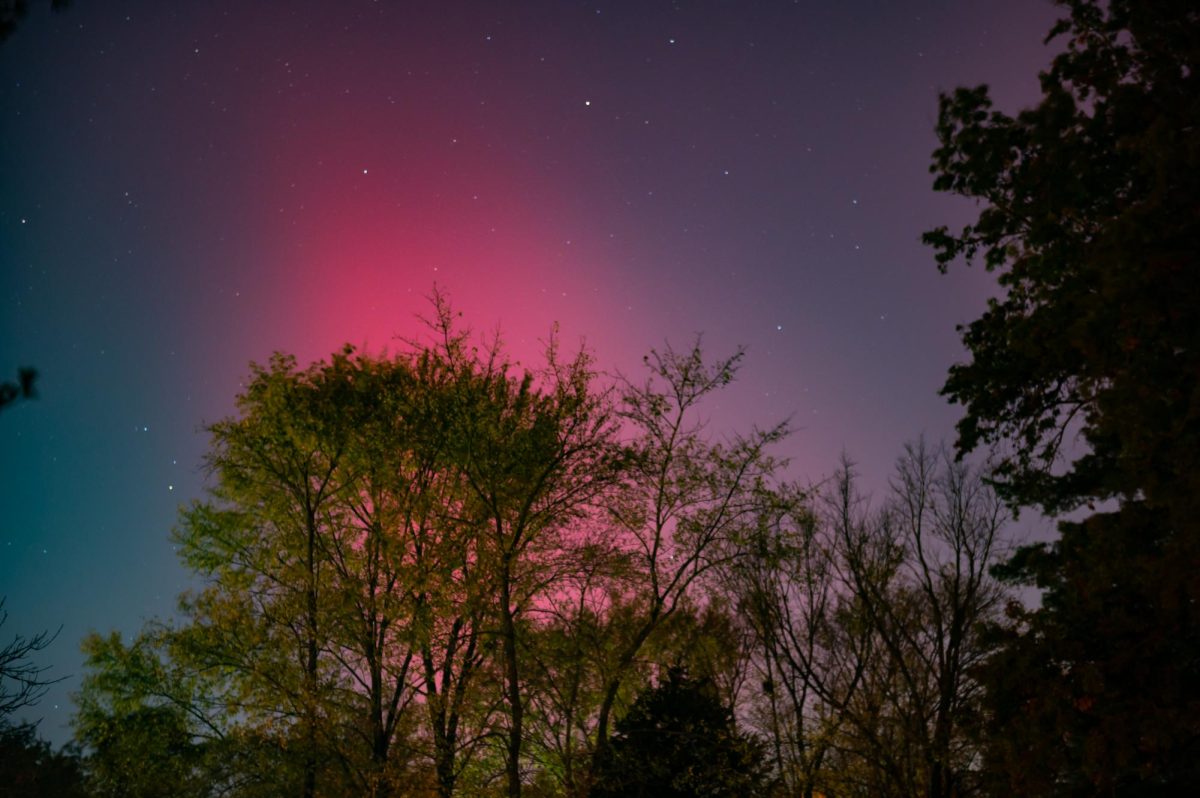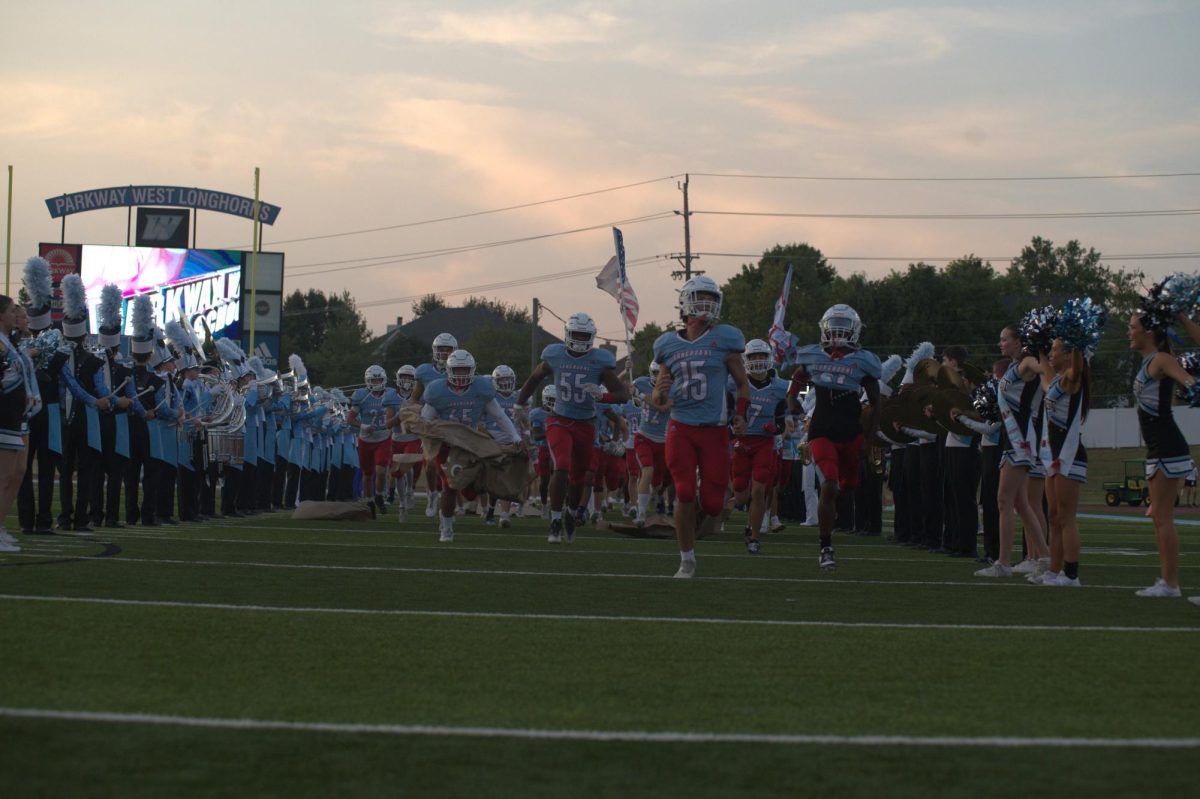Protesters are battling the Dakota Access Pipeline project to keep the 1,172 mile long pipeline from crossing under the Missouri River. ┬аControversy arose after its approval January 2015.
The pipeline will transport light crude oil from North Dakota into South Dakota, Iowa and Illinois.
тАЬI think it is very upsetting that this pipeline is going through Native American ancient burial grounds, and the Missouri river,тАЭ sophomore Miqueyla Lopez said. тАЬThey are scared that if it breaks, the oil in the pipeline will contaminate their main source of drinking water.тАЭ
Since 1995, more than 2,000 significant accidents involving oil and petroleum pipelines have occurred, adding up to about $3 billion in property damage.
тАЬThe Dakota Access Pipeline is horrible and downright disrespectful to the Native Americans,тАЭ ┬аfreshman Avery Whiting said. тАЬWe have been taking their land, destroying their traditions, appropriating their culture and now the country has put almost no thought into the ramifications of this pipeline.тАЭ
The pipeline is said to make over 40 permanent jobs, but has created over a 1000 jobs since the project has started.
тАЬI feel like this is a great way for the economy to grow,тАЭ sophomore Jordan Wilkins said. тАЬThere will be less pollution, which will also be better for the environment, because trains will not have to transport [oil] everywhere.тАЭ
The pipeline runs within a half-mile of the Standing Rock Sioux Reservation, and the tribeтАЩs leaders argue that it threatens the drinking water for local Native Americans.
тАЬIt could destroy the environment the Sioux tribe relies on and even damage sacred sites of the tribe,тАЭ Whiting said. тАЬThe way the peaceful protesters have been treated is disgusting and downright police brutality. This is their land; they are a self-governing nation. Why are we allowing our country to go onto their territory?тАЭ


![Gazing up from the stage, junior Joseph McCurdy who played Peter Pan in the school play, Lost Girl, sits next to senior Juliana Rogers, who plays Wendy Darling, during a theater rehearsal. McCurdyтАЩs passion for theater began when he observed a West High production in middle school. тАЬI've been in the high school theater program since I was a freshman. I've always loved theater, but [what prompted me to join] was [when] I went to see [a performance here] when I was in middle school, and it was super cool,тАЭ McCurdy said.](https://pwestpathfinder.com/wp-content/uploads/2025/11/IMG_6535-1200x798.jpeg)

![Standing tall, stacked in a precise formation, the cheer team strikes a signature pose during halftime on Sept. 12 at the varsity football game. Nearly a month after this performance, the cheer team performed at the Missouri Cheerleading Coaches Association (MCCA) regional competition on Oct. 4, 2025. тАЬWe've all come [to] work together a lot more,тАЭ sophomore Elyssa Philippi said. тАЬWe're a lot closer than we were [earlier in the season] and going to state has made us closer [in] trying to work with each other, learn [new] skills and make our team better.тАЭ](https://pwestpathfinder.com/wp-content/uploads/2025/11/DSC5139-1.jpg)
![Handing out candy to excited trunk-or-treaters, President of the United Nations ChildrenтАЩs Fund club and junior Sara Ashok represents that group. Ashok was eager to participate in this event for multiple reasons. тАЬI really wanted to be a part of the event because I get to help create memories for kids and spend time with my friends, spreading the things [I'm passionate about],тАЭ Ashok said.](https://pwestpathfinder.com/wp-content/uploads/2025/11/DSC_8648-1-1200x800.jpg)

![Smiling in a sea of Longhorns, Fox 2 reporter Ty Hawkins joins junior Darren Young during the morning Oct. 3 pep rally. The last time West was featured in this segment was 2011. тАЬ[I hope people see this and think] if you come to [Parkway] West, you will have the time of your life because there are so many fun activities to do that make it feel like you belong here. I was surprised so many people attended, but it was a lot of fun,тАЭ Young said.](https://pwestpathfinder.com/wp-content/uploads/2025/10/Edited2-1200x798.jpg)
![West High seniors and families listen as a representative of The Scholarship Foundation of St. Louis, Teresa Steinkamp, leads a Free Application for Federal Student Aid (FAFSA) workshop. This session, held in the library, provided guidance on financial aid, scholarships and student loan options. тАЬThis event is very beneficial for any seniors who are applying to or considering applying to colleges after high school [because] the cost of college is on the rise for seniors and parents,тАЭ college and career counselor Chris Lorenz said.](https://pwestpathfinder.com/wp-content/uploads/2025/09/DSC_4478-1200x778.jpg)
![Senior Kamori Berry walks across the field during halftime at the Homecoming football game on Sept. 12. During the pep assembly earlier that day, she was pronounced Homecoming Queen. тАЬI thought it was nice that the crowd [started] cheering right away. I know [my friends] were really excited for me, and my family was happy because typically non-white people don't win,тАЭ Berry said.](https://pwestpathfinder.com/wp-content/uploads/2025/09/DSC7046-Enhanced-NR-1200x798.jpg)



![Sophomore Shree Sikkal Kumar serves the ball across the court in a match against Lindbergh. Sikkal Kumar has been a varsity member of the varsity girlsтАЩ tennis team for two years, helping her earn the number two rank in Class 2 District 2.тАЬWhen matches are close, itтАЩs easy to get nervous, but I [ground] myself by[staying] confident and ready to play,тАЭ Sikkal Kumar said.](https://pwestpathfinder.com/wp-content/uploads/2025/11/DSC2801-1200x798.jpg)
![Dressed up as the varsity girlsтАЩ tennis coach Katelyn Arenos, senior Kate Johnson and junior Mireya David hand out candy at West HighтАЩs annual trunk or treat event. This year, the trunk or treat was moved inside as a result of adverse weather. тАЬAs a senior, I care less about Halloween now. Teachers will bring their kids and families [to WestтАЩs Trunk or Treat], but there were fewer [this year] because they just thought it was canceled [due to the] rain. [With] Halloween, I think you care less the older you get,тАЭ Johnson said.](https://pwestpathfinder.com/wp-content/uploads/2025/10/DSC00892-1-1200x800.jpg)
![Focused on providing exceptional service, sophomore Darsh Mahapatra carefully cleans the door of a customerтАЩs car. Mahapatra has always believed his customers deserve nothing less than the best. тАЬ[If] theyтАЩre trusting us with their car and our service, then I am convinced that they deserve our 100 percent effort and beyond,тАЭ Mahapatra said.](https://pwestpathfinder.com/wp-content/uploads/2025/10/DSC_0018-1200x800.jpg)
![Sophomore Aleix Pi de Cabanyes Navarro (left) finishes up a soccer game while junior Ava Muench (right) warms up for cross country practice. The two came to Parkway West High School as exchange students for the 2025-2026 school year. тАЬThe goal for the [exchange] program is to provide opportunities for both Parkway students and our international exchange students to learn about other cultures, build connections and become confident, capable, curious and caring тАФ ParkwayтАЩs Four CтАЩs тАФ in the process,тАЭ Exchange Program Lead Lauren Farrelly said.](https://pwestpathfinder.com/wp-content/uploads/2025/10/Feature-Photo-1200x800.png)
![Leaning on the podium, superintendent Melissa Schneider speaks to Parkway journalism students during a press conference. Schneider joined Parkway in July after working in the Thompson School District in Colorado. тАЬMy plan [to bond with students] is to get things on my calendar as much as possible. For example, being in [classes] is very special to me. I am trying to be opportunistic [meeting] kids [and] being in [the school] buildings. I have all the sports schedules and the fine arts schedules on my calendar, so that when I'm available, I can get to them,тАЭ Schneider said.](https://pwestpathfinder.com/wp-content/uploads/2025/09/IMG_5425-1200x943.jpeg)
![Gazing across the stage, sophomore Alexis Monteleone performs in the school theater. The Monteleone familyтАЩs band тАЬMonte and the MachineтАЭ has been releasing music since 2012, but Alexis started her own solo career in 2024 with the release of her first single, Crying Skies. тАЬMy whole family is very musical, [and I especially] love writing [songs with them],тАЭ Monteleone said.](https://pwestpathfinder.com/wp-content/uploads/2025/09/DSC7463-1200x798.jpg)
![Leaping through the air, senior Tyler Watts celebrates his first goal of the season, which put the Longhorns up 1-0 against the Lafayette Lancers. Watts decided to play soccer for West for his last year of high school and secured a spot on the varsity roster. тАЬ[Playing soccer for West] is something I had always dreamed of, but hadnтАЩt really had a good opportunity to do until now. ItтАЩs [really] fun being out [on the field], and IтАЩm glad I decided to join the team. ItтАЩs just all about having fun with the boys and enjoying what time we have left together,тАЭ Watts said.](https://pwestpathfinder.com/wp-content/uploads/2025/09/DSC_1951-1200x855.jpg)

![Shifting global trade, President Donald TrumpтАЩs tariffs are raising concerns about economic stability for the U.S. and other countries alike. тАЬ[The tariffs are] going to pose a distinct challenge to the U.S. economy and a challenge to the global economy on the whole because it's going to greatly upset who trades with who and where resources and products are going to come from,тАЭ social studies teacher Melvin Trotier said.](https://pwestpathfinder.com/wp-content/uploads/2025/05/MDB_3456-1200x800.jpg)
